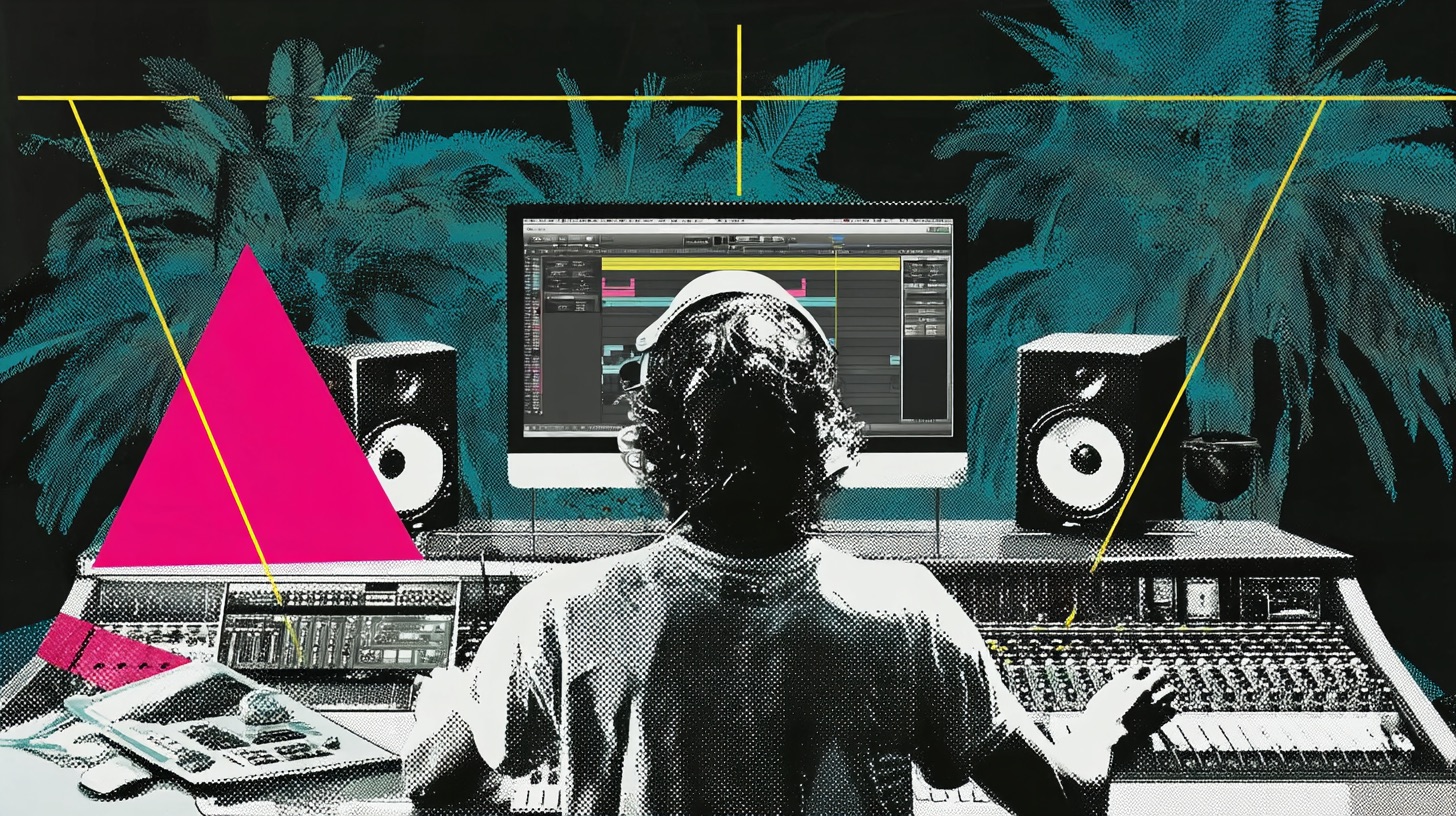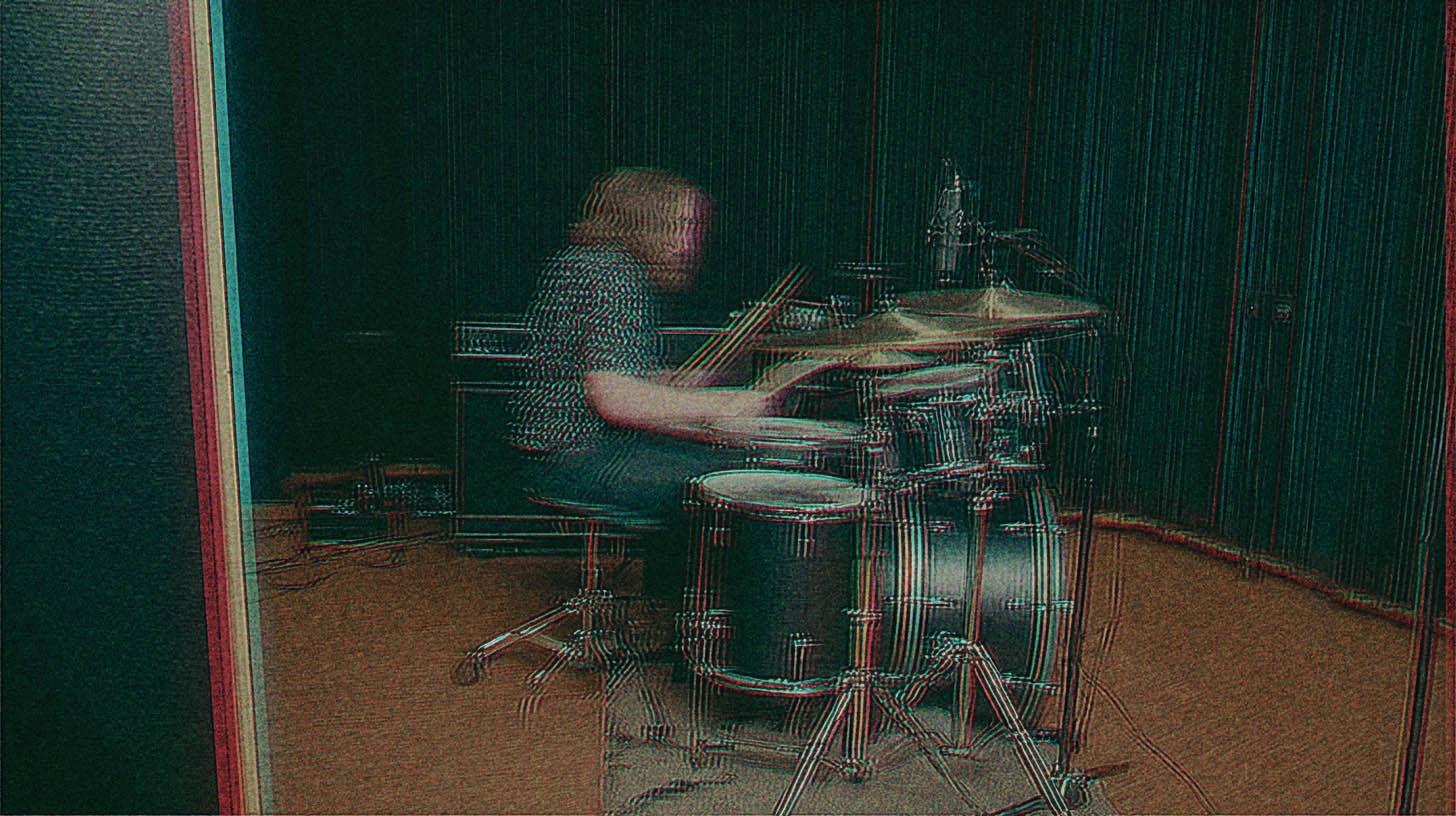
iZotope: What metal mixers need to know
Nail The Mix Staff
Modern metal isn’t just about cranking the gain and tuning down to drop Z anymore. Sure, extended range guitars and subterranean tunings are part of the landscape, but what truly defines today’s killer metal sound is precision, articulate aggression, and a clarity that cuts through even the densest arrangements. It’s about players pushing their technical abilities and harmonic knowledge to new heights, often fueled by the incredible technology at their fingertips.
Forget the outdated idea that “digital sounds sterile.” That’s a throwback to early 2000s modelers. Today’s tools, especially from a powerhouse like iZotope, are lightyears ahead, offering unprecedented control to shape, clean, and enhance your sound. If you’re looking to elevate your metal productions, understanding how to leverage iZotope plugins can be a game-changer. Let’s dive into how these tools can help you craft those massive, modern metal guitar tones and mixes.
Beyond “Digital & Sterile”: iZotope’s Role in Modern Sonic Clarity
One of the biggest misconceptions floating around is that modern production, especially with digital tools, leads to sterile or lifeless sounds. Honestly, that’s usually a sign someone hasn’t kept up with how far the tech has come. Modern metal demands clarity. With complex riffs, rapid-fire drumming, and often layered vocals, every element needs its own space. iZotope offers a suite of plugins perfect for achieving this, not by making things “digital,” but by making them defined.
Surgical Clean-Up with iZotope RX
Before you even think about distortion, a clean source tone is paramount, especially for guitars.
- iZotope RX Guitar De-noise: Got annoying amp hum or hiss on your DI tracks or even mic’d amps? Guitar De-noise is your first stop. Instead of just gating (which can sound choppy), it intelligently reduces background noise. Try it on a DI before re-amping or hitting an amp sim. A conservative setting, maybe 6-10dB of reduction, can work wonders without thinning out your core tone. It’s an essential first step when you need to rescue noisy metal tracks before you even think about re-amping.
- iZotope RX De-click & De-crackle: Sometimes pick attack can be overly aggressive, resulting in sharp, unpleasant clicks, especially with high-gain tones. RX De-click can tame these without sacrificing the initial transient. Similarly, De-crackle can smooth out issues from cables or pots.
- iZotope RX Spectral Repair: This is like Photoshop for audio. Got a weird string squeak in an otherwise perfect take? A little fret buzz that only pokes out on one note? Spectral Repair allows you to visually identify and remove these isolated audio gremlins.
- Mastering: Izotope is the default workhorse for many producers, and starting with some high-quality Izotope mastering presets is a great option.
Precision EQ with iZotope Neutron and Ozone
Harshness is the enemy of a good metal tone. That “fizzy” top end can make guitars sound cheap and grating.
- Neutron’s EQ (and Ozone’s EQ): These EQs are incredibly powerful. Use their spectrum analyzers to pinpoint those nasty resonant frequencies in your distorted guitars – often lurking anywhere from 3kHz up to 10kHz or higher. A narrow Q cut with dynamic EQ can tame these problem spots only when they become excessive, preserving your overall brightness. Want to learn more about crafting the perfect metal guitar EQ?
- Neutron’s Sculptor: This is a spectral shaping powerhouse. Load up a profile like “Distorted Electric Guitar” as a starting point, then use the target curves to subtly (or drastically) reshape the tonal balance, smoothing out harsh areas or adding punch where needed.
iZotope and the Modern Guitarist’s Workflow: From DI to Dominance
Modern musicians are increasingly self-sufficient, recording themselves and making highly specific gear choices. iZotope tools slot perfectly into this workflow, giving you control at every stage.
Polishing Your DIs
We’ve touched on RX for DIs, but it’s worth stressing: a pristine DI track is your best friend. Whether you’re using amp sims like the Fortin Nameless Suite, Neural DSP plugins, or re-amping through real gear like a Peavey 5150 or Mesa Boogie Dual Rectifier, a clean DI ensures your amp or sim is reacting to pure guitar signal, not noise, which is essential if you want to re-amp metal guitars without losing tone.
Tone Shaping and Enhancement
Once your DIs are clean, or you’ve got your mic’d amp signals, iZotope offers a ton for tone sculpting:
- Neutron’s Exciter: Want to add some harmonic richness or character? The Exciter module is fantastic, using what is essentially audio saturation to add warmth and glue. You can even use its multiband feature to target specific frequency ranges – maybe add some grit to the mids without muddying the lows.
- Ozone Imager: Quad-tracked guitars are common in modern metal, but managing their width is key. Use Ozone Imager to keep the low-end (say, below 150-200Hz) more centered or even mono for tightness, while gently widening the mids and highs for that expansive stereo field. This avoids phasey messes and keeps the punch focused.
- Neutron’s Transient Shaper: Need more pick attack on those fast palm-muted chugs? Or maybe tame some overly boomy low-end resonance from palm mutes? The Transient Shaper can add snap to the attack or control the sustain of your notes.
- Multiband Compression with Neutron/Ozone: Eyal often talks about the importance of techniques like multiband compression. On heavy rhythm guitars, a multiband compressor (like in Neutron or Ozone’s Dynamics module) can be a lifesaver for controlling low-end “flub” (e.g., a band targeting 80-200Hz) without squashing the life out of the rest of the tone. This is a common trick to keep guitars powerful yet defined. For a deeper dive into controlling your dynamics, explore these metal compression secrets.
Rhythm is King: How iZotope Helps Nail Modern Metal’s Rhythmic Precision
Modern metal often features incredibly complex rhythmic patterns, polyrhythms, and a demand for machine-like tightness. While nothing replaces dedicated practice with a metronome (like using the click in your Positive Grid Spark or DAW), iZotope tools can aid in analysis and refinement.
Refining Performances with iZotope RX
- RX Time & Pitch (Audio Editor): Used judiciously, the time-stretching capabilities in RX can help nudge a slightly off-beat note or chord back into the pocket. The key is subtlety. We’re not trying to create fake performances, but if one hit in an otherwise killer take is slightly rushed, RX can be a lifesaver. This is about refinement, not masking poor playing.
- Visual Analysis: One of the most powerful aspects of RX is its spectrogram. You can see your performance. Are your palm mutes consistently tight against the grid? Are there flamming issues between doubled tracks? This visual feedback is invaluable for diagnosing issues and understanding how to improve, aligning with the modern musician’s tendency to self-record and analyze.
iZotope Insight 2 for Metering and Analysis
This comprehensive metering suite is fantastic for getting a deeper understanding of your tracks. Use Insight 2’s loudness meters to ensure consistency, its spectrum analyzer to check tonal balance, and its spectrogram to visually confirm rhythmic accuracy against your DAW’s grid. Seeing how your guitar transients line up (or don’t) can be incredibly revealing.
Adapting and Evolving: iZotope for the Forward-Thinking Metal Producer
The best modern metal musicians are constantly learning, adapting, and leveraging new tools. iZotope is built for this forward-thinking approach.
iZotope Ozone on the Guitar Bus (or even for Quick Masters)
While Ozone is renowned as a mastering suite, its individual modules are incredibly useful on instrument busses.
- Vintage Modules (EQ, Compressor, Limiter): Add character and color to your guitar bus. The Vintage EQ can impart a musical warmth, while the Vintage Compressor can add a specific type of glue.
- Ozone’s Maximizer: Used very subtly on a guitar bus, the Maximizer can add perceived loudness and excitement without outright clipping. Handle with care!
- Tonal Balance Control 2: This is a fantastic tool. Load up some pro metal reference tracks and see how your guitar bus (or full mix) stacks up spectrally. It’s a great way to identify if your guitars are too mid-heavy, lacking low-end punch, or have excessive fizz compared to commercial releases.

100+ Insanely Detailed Mixing Tutorials
We leave absolutely nothing out, showing you every single step
Getting Creative with iZotope Trash 2 and VocalSynth 2
Modern metal isn’t afraid to push sonic boundaries.
- Trash 2: This is a distortion playground. Beyond just adding grit, its multiband capabilities mean you can, for example, heavily distort just the upper-mids of a guitar for an industrial edge while keeping the low-end tight. Try it on a parallel track and blend it in, or use it to re-amp DIs for truly unique textures. How about setting up a chain with two distortion stages in Trash 2 – one for a tight, focused mid-range crunch and another for a more blown-out fuzzy top end, then convolving it with a short, metallic impulse response?
- VocalSynth 2 (on Guitars!): Yes, it says “Vocal,” but who cares? Try modules like Biovox or Vocoder on a lead guitar line for wild, synthetic, futuristic textures. Perfect for more experimental or electronic-infused metal. Imagine a soaring lead guitar melody processed through Biovox, adding formant shifts and robotic textures that evolve over the phrase.
Bringing It All Together
iZotope provides an incredible arsenal for the modern metal guitarist and producer. From surgical clean-up with RX to complex tone shaping with Neutron, powerful bus processing with Ozone, and creative mangling with Trash 2, these tools empower you to achieve the clarity, precision, and innovative sounds that define contemporary metal.
But remember, tools are only as good as the hands (and ears) wielding them. Understanding why you’re reaching for a specific plugin and how it interacts with your source material is key.
If you’re serious about taking your metal mixes from raw tracks to polished, professional releases, seeing these tools and techniques in action is invaluable. That’s where Nail The Mix comes in. You get to watch world-class producers mix real metal songs from scratch, often using tools just like these, and explain every decision. Ready to go beyond presets and truly stop sounding generic?
Get a new set of multi-tracks every month from a world-class artist, a livestream with the producer who mixed it, 100+ tutorials, our exclusive plugins and more
Get Started for $1




